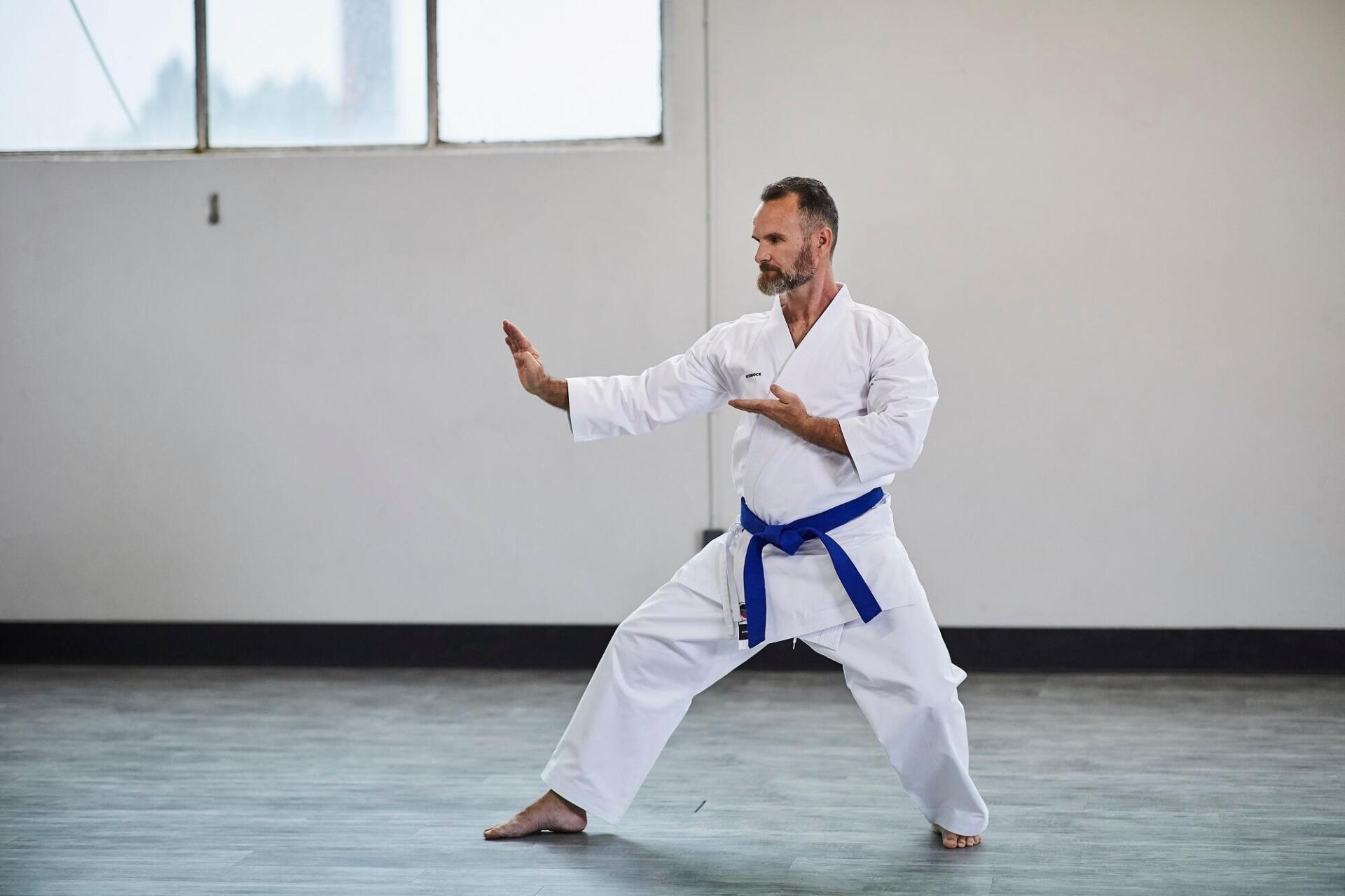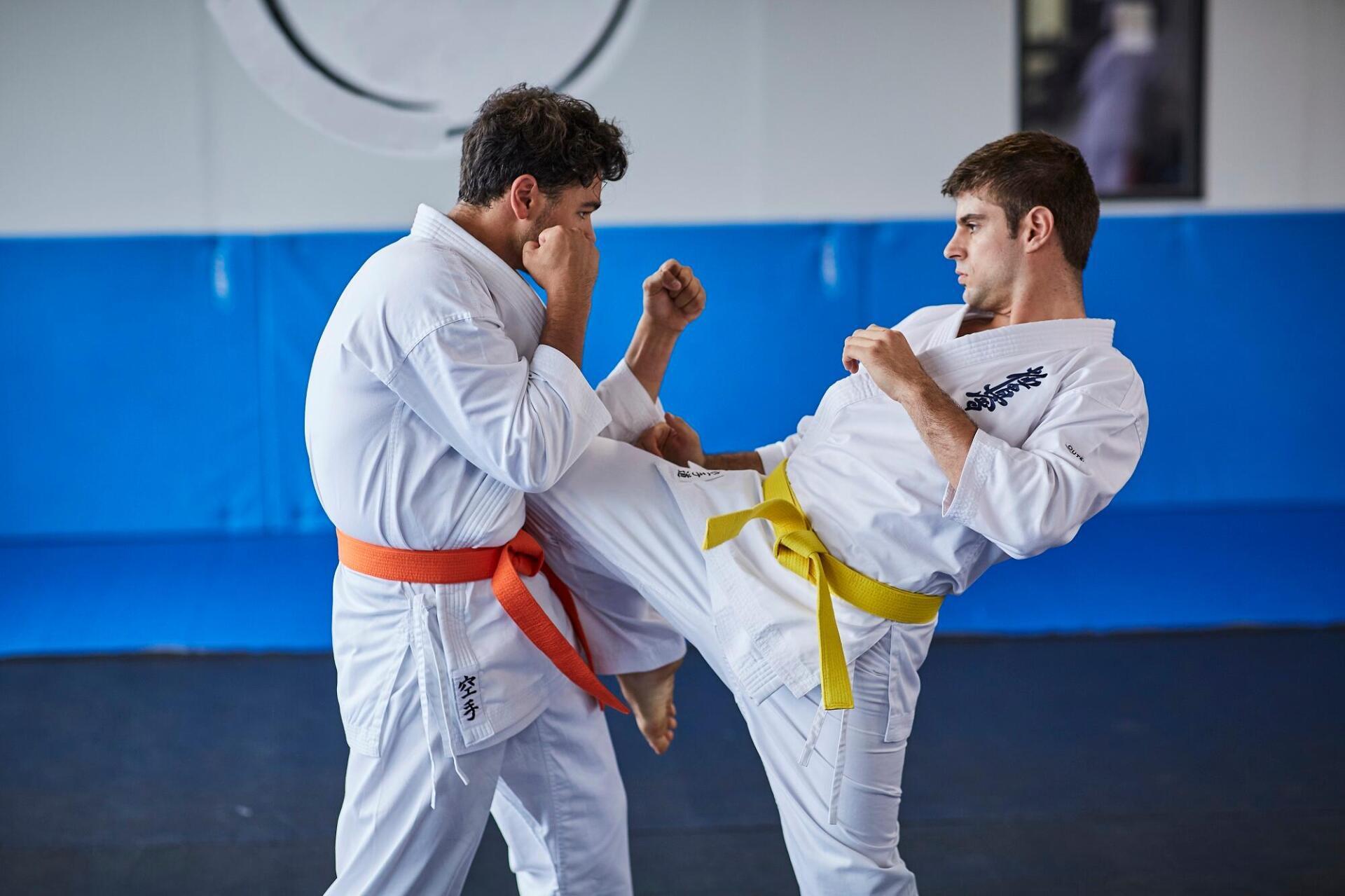All about karate and the dojo!
First things first: let me tell you about my sport! Karate means "empty hand" and is a Japanese martial art that hails from the island of Okinawa. It is a combat sport that uses hand and foot strikes as well as sweeps. It is practised in a dojo: do means "the way", so the word dojo can be translated as the place where one seeks/studies the way.
Each of dojo's four walls has a name, and they are used to guide students as they learn the katas (a sequence of movements against an imaginary opponent):
- Kamiza, the front wall, is the heart of the dojo. In a traditional Japanese dojo, a small Shinto shrine sits on this wall to honour the gods. The sensei (teacher) stands on this side, facing his or her students. There may also be an image of the founder of karate-do, Funakoshi Gichin, a quote or calligraphy that expresses an ideal, philosophy and ethics of the club.
- Shimoza is the name of the back wall. Students stand on this side, with beginners (kohai) to the right of the sensei and more advanced students to the left.
- Joseki: the sensei's assistants and black belts stand along this side, as well as guests of honour.
- Shimozeki: the side opposite the Joseki.
The floor of the dojo is traditionally in wood, or covered with a tatami, a sort of mat to cushion falls. It was originally made of layers of rice straw.
Now that you know all about the dojo, it's time to choose a style: traditional, kumite, full contact, light contact... Which will it be?





